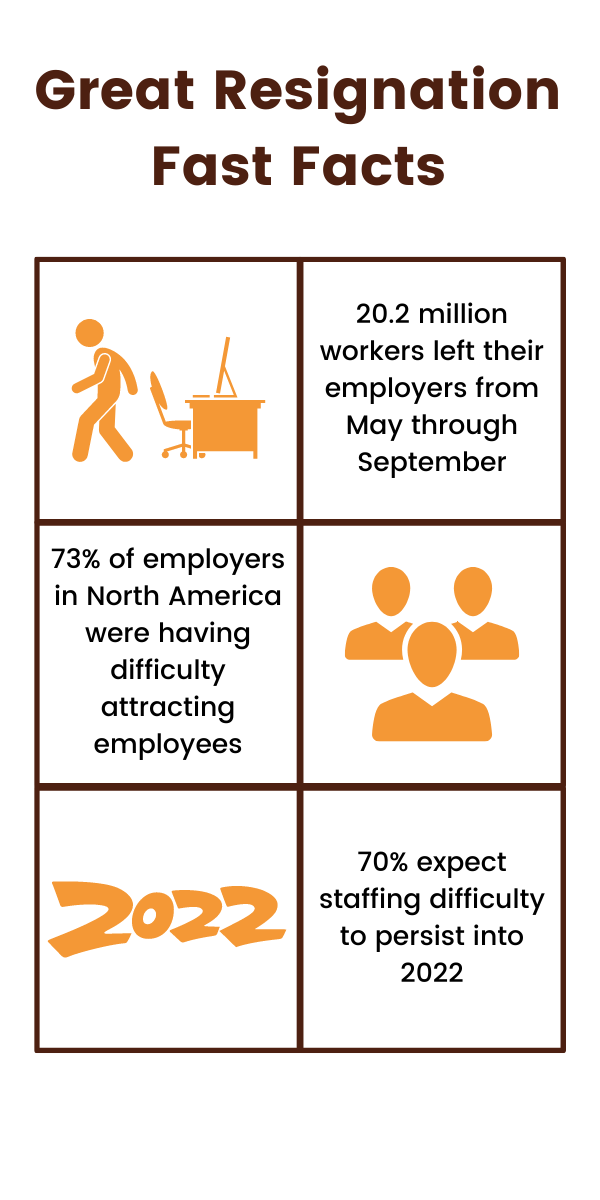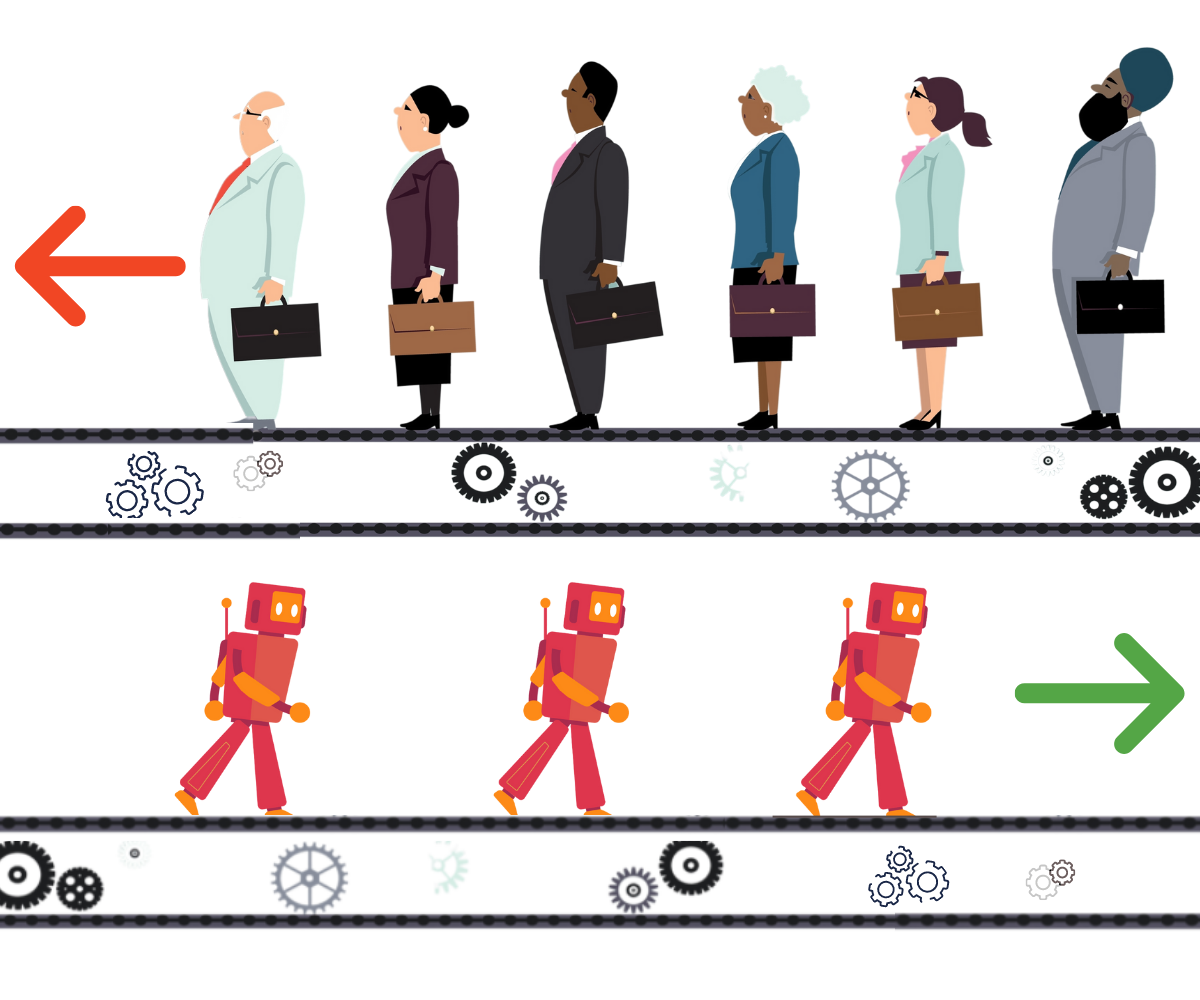Surviving the Great Resignation with RPA
Covid-19 has not only changed the way we work, but the way we view work. Employees are starting to question whether the traditional 9-5 job is for them. Many are even swapping their business casual office attire for sweatpants and the #WFH lifestyle. Plus, they’re realizing their true value and ditching boring, repetitive work for more challenging professional opportunities. On the other hand, lucky employers are rethinking their business models with the shift to remote work and the changing consumer market. The unlucky employers are facing a much more dire problem: employee shortages. With that, we’ve ushered in the time of the Great Resignation. This era may be new to our society, but in the spirit of reinventing the workplace, there are solutions that could bring us out of this challenging time; solutions by the name of robotic process automation.
What is the Great Resignation?
The Great Resignation of 2021 is the name we’ve coined for the period of high quit-rates triggered by the Covid-19 pandemic. According to the latest data from the Bureau of Labor and Statistics, the share of workers who voluntarily leave their jobs hit a new record of 3% in September 2021. In total, 20.2 million workers left their employers from May through September. In August 2021, a survey found that 73% of 380 employers in North America were having difficulty attracting employees. That number is up 300% from 2020. What’s more: 70% expect this difficulty to persist into 2022.

Why is the Great Resignation Happening?
Because the obvious overarching reason of coronavirus, pandemic attributed to more nuanced socio-economic shifts that led the Great Resignation, including:
• Employees are bored with repetitive, mundane tasks
• Employees are seeking more challenging work
• Employees are trying to achieve a work-life balance
• Employees are rearranging their priorities
• Employees are questioning the traditional 9-5 business model
• Fear of exposure/contraction of the virus has led to anxieties about reentering the shared workspace
• Federal unemployment compensation led to higher salary expectations
• The stress of the pandemic triggered employee burnout
These are just a handful of the long, long list of reasons for the Great Resignation of 2021.
Impacts of the Great Resignation
This time period is giving folks an opportunity to pursue dreams outside of their careers and prioritize their personal lives over professional, which is great. But we must consider the negative impact the Great Resignation is having on employers, employees, and customers, too.
Employers
Put simply, the Great Resignation of 2021 has made it excruciatingly difficult for employers to find and keep workers. In turn, they’re forced to downsize their operations or fold altogether.
Employees
For the employees that aren’t participating in the Great Resignation, their work lives have gotten much harder. With fewer people to split the work, they are having to bear the load of their former coworkers. This prohibits them from providing higher-quality work and causes stress and anxiety.
Customers
Fewer workers mean longer wait times and worse service. This tests customers’ loyalty to the brand and could cause them to search for other providers of the goods and/or services they are seeking.
The Answer: Process Automation
Robotic Process Automation (RPA) is a technology that uses software robots to automate repetitive, mundane, and logic-based tasks. These intelligent automation software bots can be programmed to carry out error-free tasks at a high volume and speed (learn more about what is RPA). Essentially, RPA can replace human employees in a cost-effective, highly-accurate, and scalable fashion. Thus, intelligent automation is an excellent solution to the labor shortage many employees are facing.

Will automation replace human workers?
There is a common misconception that the introduction of RPA into the business space will result in the elimination of human employees. Rather, RPA can work together with human employees for an even stronger workforce. RPA Services takes the objective tasks from the human so that they can focus more on the subjective jobs. With the implementation of process automation, employees can do more creative, innovative, and interesting work; automation and employee satisfaction are directly correlated. Plus, there is still a human element to robotic process automation.

If you opt for a grassroots approach, individuals are responsible for creating and managing their own software robots using low-code development. A Center of Excellence adoption strategy is carried out by the CoE team who is responsible for embedding and implanting the process automation at the organization level. No matter which approach is selected, humans are still responsible for correctly configuring the software bots, keeping applications involved in the processes up to date, and making sure all compliances are satisfied. This is necessary in order for the robotic process automation to work accurately and achieve desired expectations.
Adjusting to the New Normal
Recovering from the Covid-19 pandemic is all about adjusting to the new normal. The way we work has changed forever, so old solutions will not solve these new problems. That is why robotic process automation is being introduced into modern workplaces in response to the Great Resignation. Times are certainly challenging, but there are tools to help you accommodate. The next generation of professionalism is here and yours for the taking. Are you ready to start your journey towards digital transformation?
Sunflower Lab has multiple locations to better serve our clients. Robotic process automation services Ohio, robotic process automation services New Jersey, and robotic process automation services New York all designed specifically to accommodate the needs in each unique market. Reach out to one of our RPA specialists today to know more about our RPA Services.
Get a FREE quote on your project today!
Your idea is 100% protected by our Non-Disclosure Agreement
You might also like
Stay ahead in tech with Sunflower Lab’s curated blogs, sorted by technology type. From AI to Digital Products, explore cutting-edge developments in our insightful, categorized collection. Dive in and stay informed about the ever-evolving digital landscape with Sunflower Lab.








